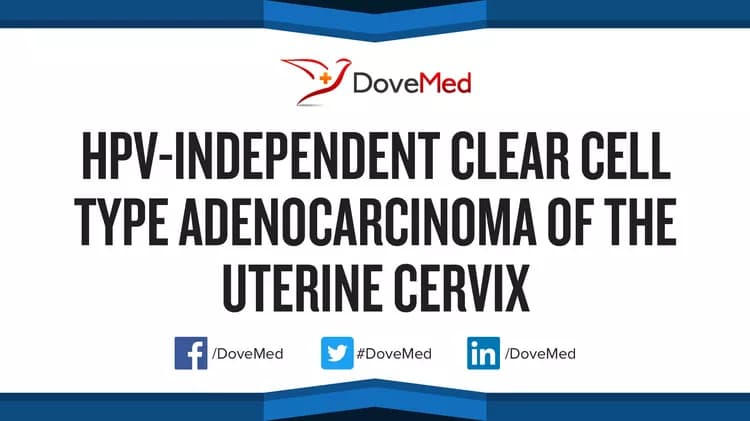
HPV-Independent Clear Cell Type Adenocarcinoma of the Uterine Cervix
What are the other Names for this Condition? (Also known as/Synonyms)
- Adenocarcinoma, HPV-Independent, Clear Cell Type, of the Uterine Cervix
- HPV-Independent Clear Cell Type Cervical Adenocarcinoma
- Human Papillomavirus Independent Clear Cell Type Adenocarcinoma of Cervix
What is HPV-Independent Clear Cell Type Adenocarcinoma of the Uterine Cervix? (Definition/Background Information)
- HPV-Independent Clear Cell Type Adenocarcinoma of the Uterine Cervix is a type of cervical cancer. Cervical cancer is a malignancy of the uterine cervix, which is the lower part of the uterus/womb. It is a very common cancer in women worldwide. The cervix is the tube-like structure that connects the uterus to the vagina. Almost all cervical cancers are believed to originate from a premalignant lesion
- The development of cervical cancer occurs slowly and the process of precancerous changes leading to invasive cancer, generally takes place over decades. Hence, periodic screening of women with Pap smears helps in early detection and management of any precancerous change, before a full-blown malignancy develops. Cervical cancer is frequently preventable through early screening programs and HPV vaccinations
- Adenocarcinomas arise from the glandular cells of the inner portion of the cervix (the endocervix). After squamous cell cancers, cervical adenocarcinomas are the second most common type of tumors affecting the cervix. This differentiation is based on the appearance of cells when observed under a microscope by the pathologist. Almost all variants of cervical adenocarcinomas are related to human papillomavirus (HPV) infection
- HPV-Independent Clear Cell Type Cervical Adenocarcinoma is the development of invasive carcinoma in the background of HPV negative status i.e., it is not caused by HPV-related infection. Around 3-4% of cervical adenocarcinomas are the clear cell type variants, a subtype that is observed under two distinct settings:
- Against a background of in utero exposure to diethylstilbestrol, or DES, a synthetic type of estrogen hormone. This is seen in a minority of cases affecting young women (average age 19 years)
- Sporadic occurrence in the absence of DES exposure, which form a majority and are noted in middle-aged and older women (average age 51 years)
- The cause of development of HPV-Independent Adenocarcinoma of the Uterine Cervix, Clear Cell Type is not well-understood. It is not associated with infection by high-risk human papillomaviruses. The malignancy is believed to originate in the endocervical (inner cervix) region. Some experts inform that Lynch syndrome and mutations on the POLE gene may be contributive along-with DES exposure
- HPV-Independent Clear Cell Type Adenocarcinoma of the Uterine Cervix may present abnormal vaginal bleeding and discharge, abdominal pain, and menstrual cycle disturbances. Advanced cases may present changes in bowel movements, loss of appetite, fatigue, and frequent urination. A diagnosis of the condition may involve colposcopy and cervical biopsy procedures
- A treatment of HPV-Independent Clear Cell Type Cervical Adenocarcinoma is based on the cancer staging and presenting signs and symptoms. This may involve a combination of surgery, chemotherapy, and radiation therapy. The outcomes are generally favorable when compared to conventional adenocarcinoma types; the absence of lymph node involvement is a positive prognostic indicator. The overall survival rates are better and lower recurrences are also noted
Related Articles
Test Your Knowledge
Asked by users
Related Centers
Related Specialties
Related Physicians
Related Procedures
Related Resources
Join DoveHubs
and connect with fellow professionals

0 Comments
Please log in to post a comment.